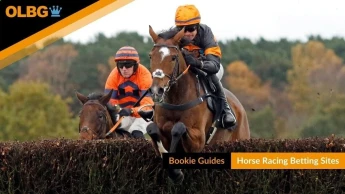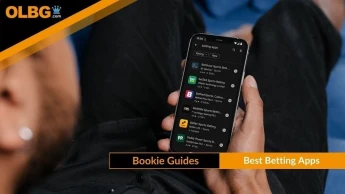What are OLBG Hot Tips?
This page provides a list of the most popular betting tips today according to the combined wisdom of the OLBG tipster community. We call our most popular betting predictions our hot tips. They are on fire!
If you are looking at the most popular betting tips during the day, then the likelihood is that they will be largely made up of betting tips for horse racing. Betting tips for this evening will normally be predominantly football betting tips during the week.
If you are looking for betting tips tonight, you will see that US sports betting is popular, and we regularly see NBA betting tips rise to the top of the hot tipsters' list.
The weekend betting tips, of course, cover a large range of sports. In all, we cover over 20+ sports at OLBG, so you can find sports betting tips for all the major events.
Which Sports Betting tips do you cover?
Horse Racing and Football are the most popular sports for betting in the UK, but we also cover betting tips for you across 19 other sports. Our Tennis betting tips and Golf Betting tips are the next most popular tips.
We also provide
- American Football Picks
- Baseball Picks
- Basketball Picks
- Boxing & UFC Betting Predictions
- Cricket Betting Tips
- Cycling Betting Tips
- Darts Tips
- Gaelic Football Betting Tips
- Greyhound Racing Tips
- Handball Picks
- Hurling Predictions
- Ice Hockey Picks
- Motor Racing Predictions
- Rugby Union Tips
- Rugby League Tips
- Snooker Tips
- Volleyball Betting Tips
Aside from these main categories, we also have a designated section of the site for the top betting events of the year
Why are OLBG Betting Tips the best?
Quite simply because we have the best tipsters. OLBG has been providing betting tips since 2002. During this time, our tipsters have been rewarded with over £1,000,000 in prize money. These huge prize funds attract and retain the best sports betting tipsters around.
The competition is fierce, but this brings you the best tips as the tipsters are constantly looking for ways to recommend profitable bets consistently. We analyse all the data for you so that we can show you the best betting tips from specialist tipsters for each sport. For example, if you look at the football betting tips, then the profits from the tips will be only for tips placed on football.
The competitions are all separate for each sport, which allows us to grow specialist tipsters for you. There are many ways to analyse the tipsters to understand which are the best bets. The easiest way to see all this information is through the OLBG Sports Betting Tips app.
We provide profit figures from all bets for the sport over the past six months. The profit consistency figures are shared so that you can see which of the last 6 months the tipsters have yielded a profit in, and other interesting factors like profits this month or week or days in profit.
What if I want a more detailed explanation of a betting tip?
You will see many tip comments with each betting selection. Some of our users like to read these and decide which opinion they will follow. You can gain some great insight into betting strategies from our tipsters through these comments.
For popular events, you will see comments for most outcomes. Each will be trying to convince you to follow their tip. Make your mind up from these comments, which often put people onto winning bets that they would never have considered.
For discussion around the best bets for each event, we have a very friendly and busy sports betting tips forum. Head here if you want to ask questions to tipsters or to share your opinions too on what the best betting opportunities are today.
Some people like to read longer article-style betting previews. If that is you, then we have an excellent blogs section at OLBG where our expert tipsters preview many of the popular events.
As well as event previews, they also share valuable information on betting strategy. Check out the OLBG Sports Betting Blogs before placing your bet at your favourite sports betting sites.
Once you have found the bets you want to place, the next choice is where to place them. OLBG has reviewed all the UK-licensed bookies, as have many of our users.
If you are looking for information on the best betting apps or the best horse racing betting sites, we have detailed research for those and many more in our bookmaker's articles section. If you are opening a new account, then also check out the latest betting offers.
FAQ
Betting Tips FAQs
How do I win a bet every time?
You can't; instead, you should focus on trying to obtain value every time you place a bet. This means betting at odds higher than the selection's real chances of winning. If you can do this consistently, you will start to turn the odds in your favour.
Which betting tips site is the best?
OLBG is the best betting tips site available because it pools knowledge from 1000s of tipsters whose expertise is spread across many different sports and other specialisms. Other tip sites do not provide as much data to analyse tipsters, do not encourage detailed reasoning behind each tip to be shared and do not cover as many sports, leagues and markets as OLBG. But don't just take our word for it, read our Trustpilot rating (No. 1 in our sector) or our App Store Reviews (top-rated betting tips app).
Are betting tipsters good?
Some betting tipsters at OLBG are very good as they are consistently profitable with their tips. You can find good betting tipsters by analysing their records and also reading their opinions as to why they are recommending a bet, as you may learn from their knowledge.
What is the best bet of the day?
The best bet of the day at OLBG is often seen by our users as the most popular bet at the top of this page. You can filter the tips to find your best bet of the day depending on the criteria you think are important by using the customise your tips link.
Who is the best tipster in the World?
Gooner Jay is the best tipster in the World per OLBG horse racing level stakes profits during 2024 with a profit of +3,602 (to 10pt stakes). The best tipster in the World for you will depend on the sports you want to receive tips on, the countries, leagues or markets and your risk appetite. There are so many factors that need to be analysed to answer this, which is why we provide you with all the data. Head to our best tipsters page to start looking for the best tipster in the World.
The content on our main betting tips page has been created and maintained by Darren, James and Andy, making sure you have up-to-date information at hand.











